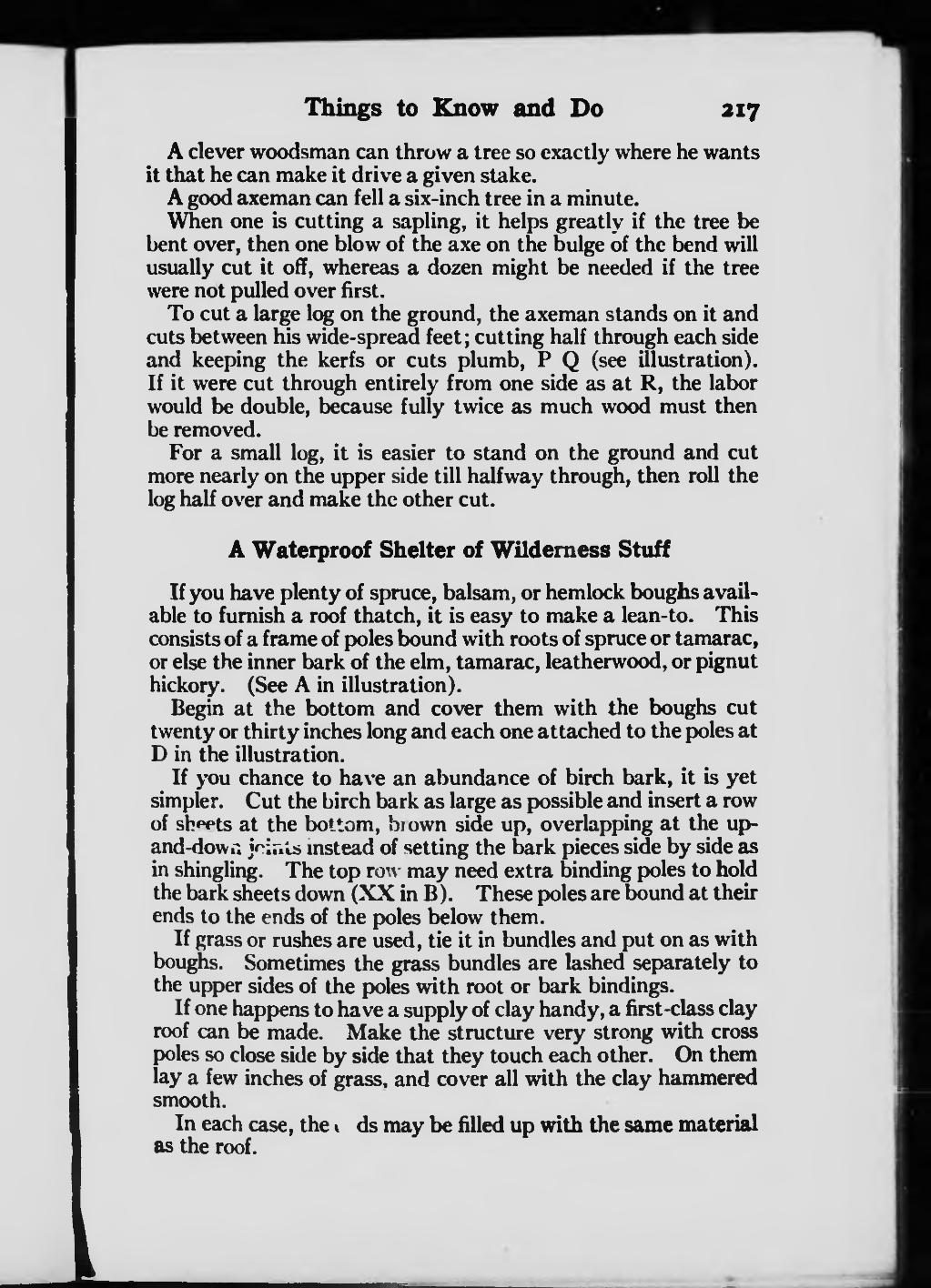Things to Know and Do 317 A clever woodsman can throw a tree so exactly where he wants it that he can make it drive a given stake. A good axeman can fell a six-inch tree in a minute. When one is cutting a sapling, it helps greatly if the tree be bent over, then one blow of the axe on the bulge of the bend will usually cut it off, whereas a dozen might be needed if the tree were not pulled over first. To cut a large log on the ground, the axeman stands on it and cuts between his wide-spread feet; cutting half through each side and keeping the kerfs or cuts plumb, P Q (see illustration). If it were cut through entirely from one side as at R, the labor would be double, because fully twice as much wood must then be removed. For a small log, it is easier to stand on the ground and cut more nearly on the upper side till halfway through, then roll the log half over and make the other cut. A Waterpnxrf Shdter of Wildemeu Sti^ If you have plenty of spruce, balsam, or hemlock boughs avail* able to furnish a roof thatch, it is easy to make a lean-to. This consists of a frame of poles bound with roots of spruce or tamarac, or else the inner bark of the elm, tamarac, leatherwood, or pignut hickory. (See A in illustration). Begin at the bottom and cover them with the boughs cut twenty or thirty inches long and each one attached to the poles at D in the illustration. If you chance to have an abundance of birch bark, it is yet simpler. Cut the birch bark as large as possible and insert a row of sheets at the bottom, brown side up, overlapping at the up- and-down jrints mstead of setting the bark pieces side by side as in shingling. The top rev may need extra binding jxjles to hold the bark sheets down (XX in B ) . These poles are bound at their ends to the ends of the poles below them. If grass or rushes are used, tie it in bundles and put on as with boughs. Sometimes the grass bundles are lashed separately to the upper sides of the poles with root or bark bindings. If one happens to have a supply of clay handy, a first-class clay roof can be made. Make the structure very strqng with cross poles so close side by side that they touch each other. On them lay a few inches of grass, and covor all with the day hammered smooth. In each case, the « ds may be filled up with the same material as the TO(A.
Stránka:roll 1916.djvu/241
Z thewoodcraft.org
Tato stránka nebyla zkontrolována
